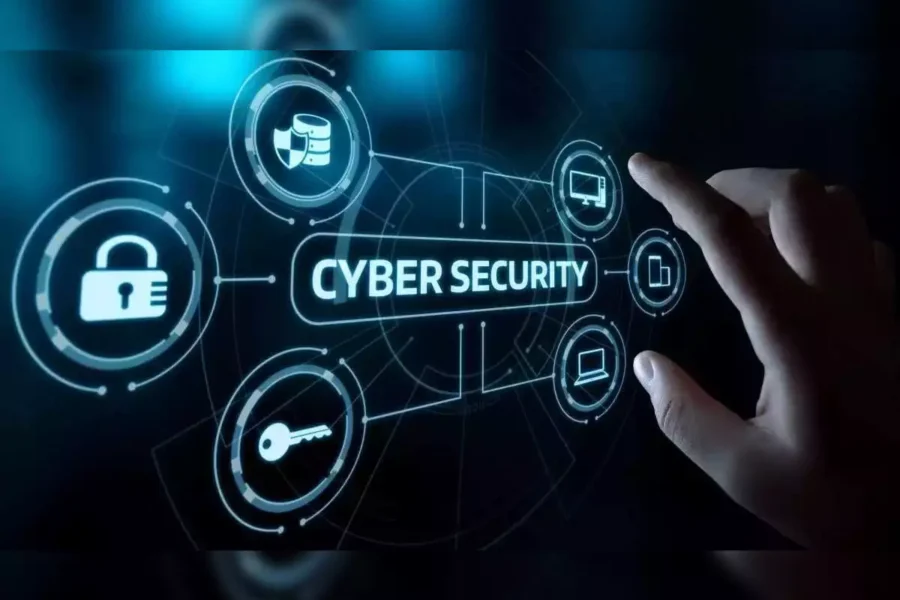Cybersecurity is the safeguarding of data, software systems, networks, and devices such as laptops, PCs, smartphones, point-of-sale systems, etc. against intrusions, illegal activities, and system damage. Any software that contains private data, such as financial, health, legal, or other data, needs to be adequately safeguarded against cyberattacks in order to avoid any kind of loss, damage, or malfunction. Devices, data, and software could be vulnerable to dangerous threats like malicious software if insufficient security measures are in place. As a result, cybersecurity precautions are vital to a system’s value, security, and quality.
Common cyber threats-
The most common attacks are:
*Password attack;
*Phishing scam;
*DOS attacks, i.e. denial of service attack;
*man-in-the middle attack; and
*malware.
The Information Technology Act of 2000 is the main law governing cyber-related activities in India. The Act was enacted in 2000 and has been amended several times since then, most recently in 2008. The Act covers a wide range of topics, including electronic transactions, digital signatures, cybercrimes, and data protection.
The Act defines a cybercrime as any crime that is committed using a computer or other electronic device.
Cybercrimes can include a wide range of activities, such as:
1. Hacking: Unauthorised access to a computer system.
2. Data theft: Stealing or unauthorised use of personal or confidential information.
3. Cyberbullying: The use of electronic devices to harass or intimidate someone.
4. Phishing: Sending fraudulent emails that appear to be from legitimate companies in order to steal personal information.
5. Malware: Software that is designed to damage or disrupt a computer system.
The Act also provides for a number of data protection provisions, including:
*The right to privacy: Individuals have the right to control how their personal information is collected, used, and disclosed.
*The right to access: Individuals have the right to access their personal information that is held by a company or organisation.
*The right to correction: Individuals have the right to correct any inaccuracies in their personal information
*The right to erasure: Individuals have the right to have their personal information erased if it is no longer necessary for the purpose for which it was collected.
Essential for cybersecurity requirements-
1. Identify, i.e., make a list of all equipments, software, and data to be used, including laptops, smartphones, tablets, POS devices, etc.
2. To protect against cyberattacks on equipments, software and data to be used in the safest possible way.
3. To detect any cyber-attack on equipment, software and data, including laptops, smartphones,tablets and other devices.
4. To respond quickly against cyberattacks and secure IT infrastructure by engaging experts to investigate and identify the source of the attack and its reasons.
5. To recover data after a cyberattack from backups. It requires secure,reliable and regular backup data to locations like cloud storage, external hard drives, etc.
Tips for secure computing-
*Everybody is a target for hackers. We should not say that it won’t happen to us. We are all at risk, and stakes are high – both for personal and financial well-being and for the organisation’s standing and reputation. Therefore, cybersecurity is everyone’s responsibility.
*To keep software up-to-date.
*Avoid phishing scams – beware of suspicious emails and phone calls.
*To practise good password management.
*To avoid visiting unknown websites or downloading software from untrusted sources.
*The devices should never be left unattended.
*To safeguard protected data.
*To use mobile devices safely.
*Installation of antivirus/anti-malware protection.
*Data should be backed up regularly; i.e., if anyone is a victim of a security incident, the only guaranteed way to repair the computer is to erase and reinstall the system.
Conclusion–
We are searching for advancements in the field of cybersecurity, such as improved threat detection models, more stringent cybersecurity compliance, and rapid response tools. Businesses that use cloud computing, IoT, and OT should think about putting some best practices into place to guard against system attacks.


Their global health insights are enlightening.
zestril drug
Always on the pulse of international healthcare developments.
A game-changer for those needing international medication access.
gabapentin und fibromyalgie
Quick service without compromising on quality.
They ensure global standards in every pill.
what is shelf life of gabapentin
Their loyalty program offers great deals.
The pharmacists are always updated with the latest in medicine.
where to get generic cipro pill
They provide valuable advice on international drug interactions.
They never compromise on quality.
can i take gabapentin if pregnant
They’re globally renowned for their impeccable service.